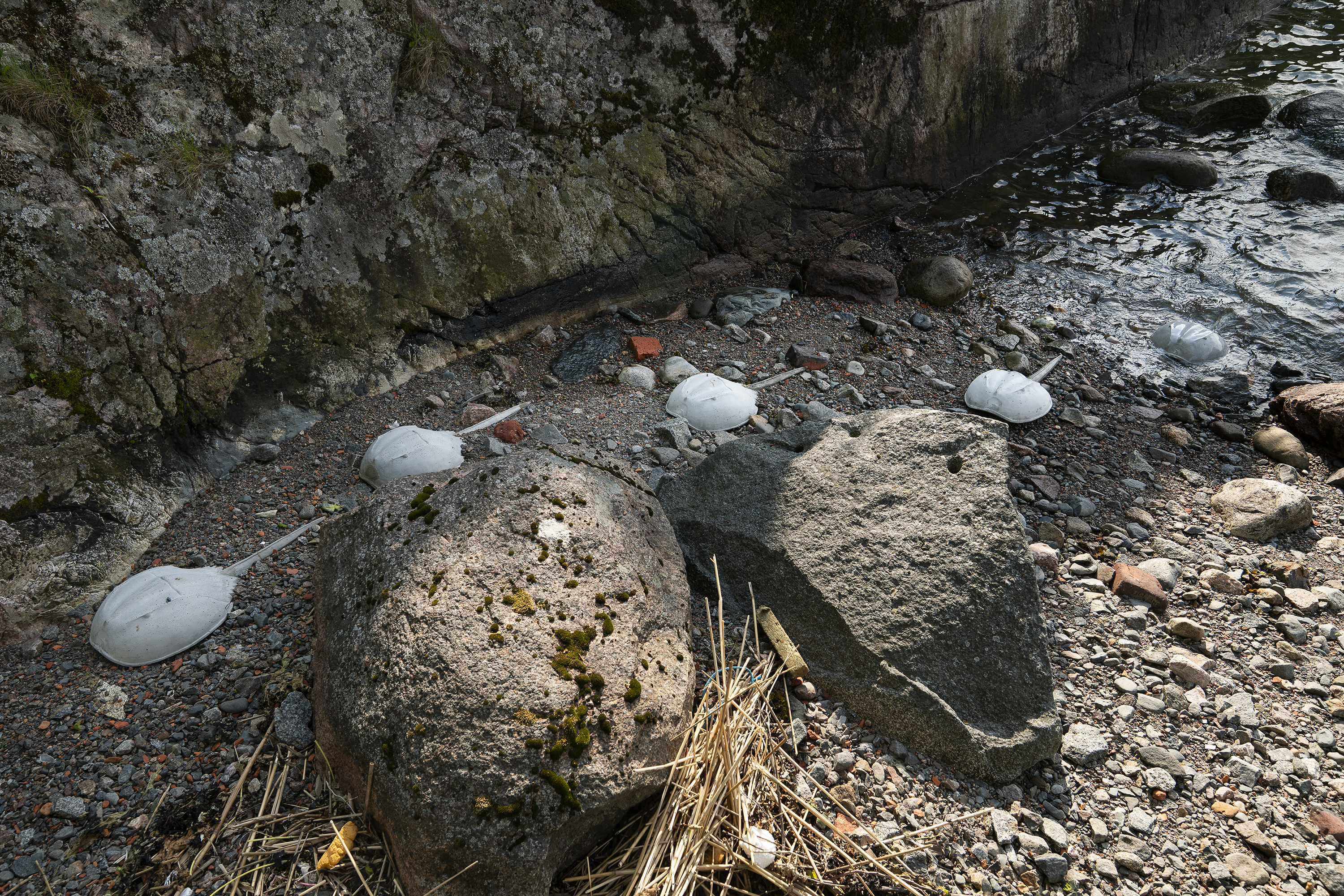Tue Greenfort’s (b. 1973) interdisciplinary practice explores evolutionary processes and interactions between public and private space, nature and culture.
His work often revolves around ecology and its history, addressing social relations, human agency, and environmental issues such as eutrophication.
Photo: Courtesy of the artist

Tue Greenfort: Periphylla Periphylla I, 2016 ja Ohrenqualle, lat. Aurelia Aurita I-VII, 2022. Helsinki Biennial 8.6.–21.9.2025, Vallisaari Island. Photo: HAM / Helsinki Biennial / Sonja Hyytiäinen
Ohrenqualle, Aurelia Aurita I-VII, 2022
Periphylla periphylla I, 2016
Artwork location: Vallisaari Island
Greenfort’s exhibit in Vallisaari’s Alexander Battery consists of mouth-blown, blue-tinted glass sculptures representing the moon jelly (Aurelia aurita), a common jellyfish species found also in the Baltic Sea, and a sculpture with long, orange tentacles representing a helmet jellyfish (Periphylla periphylla), a deep-sea species that signals its presence by means of bioluminescence. Jellyfish are millions of years old, making them the oldest surviving species on Earth after cyanobacteria and fungi. Due to climate change and ocean warming, jellyfish have spread to areas where they were not previously encountered, and their increasing numbers are threatening the balance of fragile coastal ecosystems. Jellyfish are simple invertebrates that can detect such things as light, gravity, chemical components and sound pressure waves. They can also detect water salinity and oxygen levels, thereby acting as ‘barometers’ of ecosystem health. They offer a jumping-off point for Greenfort to re-imagine the co-existence of all living beings.

Tue Greenfort: Limulus Polyphemus Lampisaari (Pond Island), 2025. Helsinki Biennial 8.6.–21.9.2025, Vallisaari Island. Photo: HAM / Helsinki Biennial / Sonja Hyytiäinen
Limulus Polyphemus Lampisaari (Pond Island), 2025
Artwork location: Vallisaari Island
Greenfort has installed a group of concrete-cast horseshoe crabs in shallow coastal waters near Gunpowder Magazine 1 on Vallisaari Island. These living fossils have inhabited the earth for hundreds of millions of years, offering a staggering perspective on the longevity of life on Earth. Their material form harks back to Vallisaari’s history as a military island fortified with stone and concrete. The title stems from the name by which the island was known during the Middle Ages, ‘Lampisaari’ (Pond Island), on account of the freshwater pond in the middle of the island. The crab sculptures deliver a reminder of life’s fragility, as the marine industry poses a constant threat of destruction in the shallow coastal waters inhabited by horseshoe crabs.